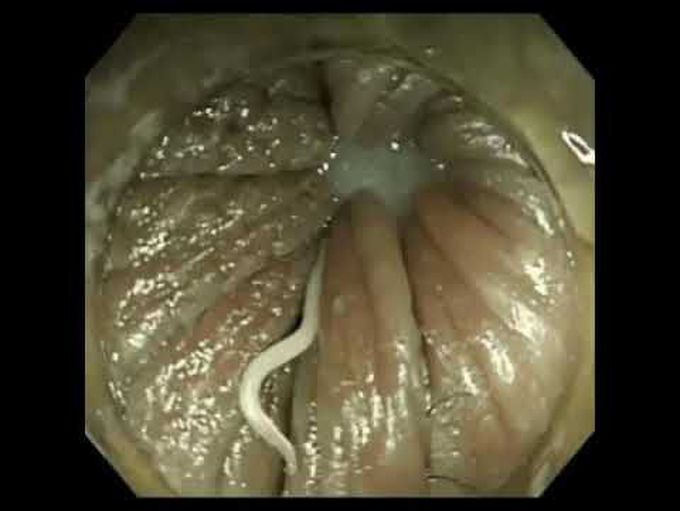


Enterobius vermicularis(Pinworm) Infection
A 32-year-old woman presented to the outpatient clinic with a 2-month history of anal pruritus and bleeding. She reported occasional constipation but no abdominal pain. On physical examination, her abdomen was nontender, and rectal examination revealed hemorrhoids. Laboratory results showed a hemoglobin level of 11.2 g per deciliter (reference range, 12.0 to 16.0) and a white-cell count of 8600 per cubic millimeter (reference range, 4000 to 10,000) with 0.9% eosinophils (reference range, 1 to 5). The patient underwent colonoscopy, which revealed a 1-cm worm moving in the anus (Panel A and video). The nematode was identified as a female Enterobius vermicularis — also known as pinworm — that was carrying eggs measuring 50 to 60 μm by 20 to 30 μm that were elongated and flattened on one side (Panel B). The patient’s 5-year-old daughter also reported anal pruritus and had classmates in whom pinworm infection had recently been diagnosed. The patient and her family members were treated with oral albendazole, and at follow-up 2 months later the anal pruritus in the patient and her daughter had disappeared.

